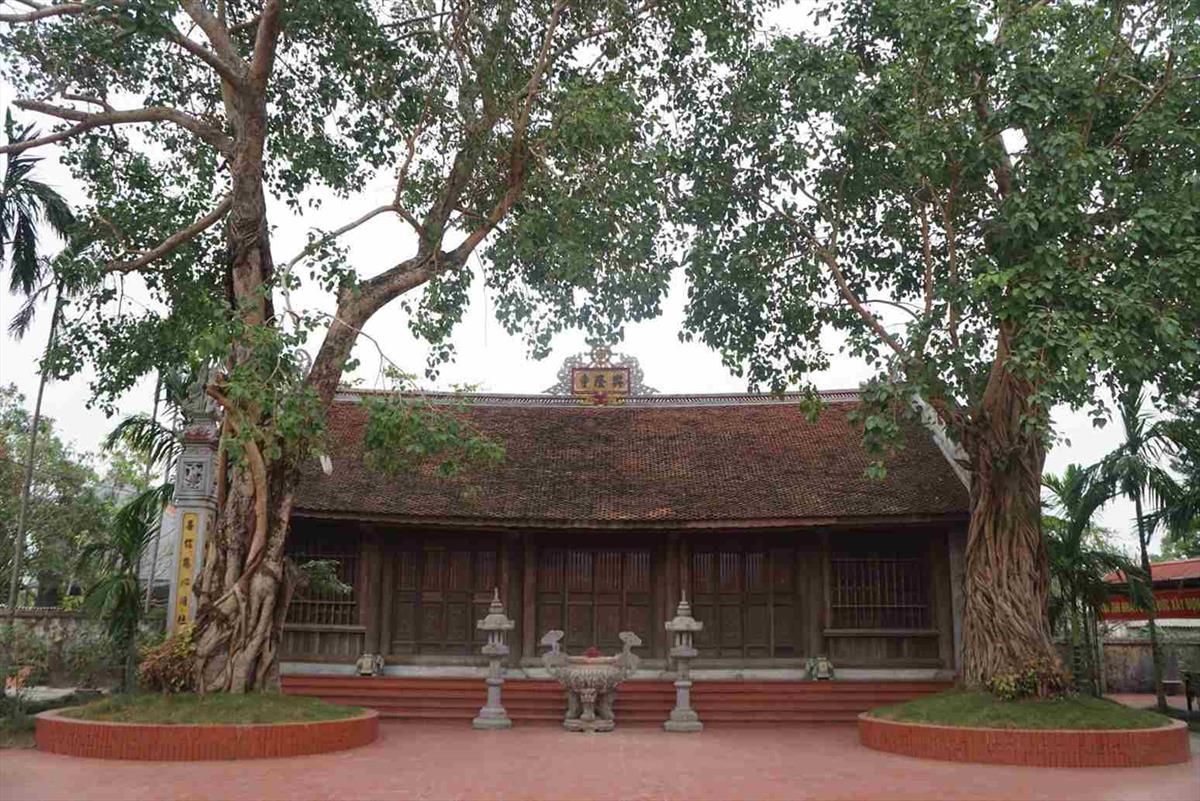Trông Pagoda's festival in Hải Dương province

The Trông Pagoda Festival is organized to commemorate the merits of Zen master Nguyễn Minh Không and pray for favorable weather, abundant harvests, and the well-being of the people. The festival not only attracts local residents but also visitors from neighboring provinces and tourists from afar.
One of the most important rituals of the festival is the "water procession." This ancient custom symbolizes respect and reverence for water, a crucial element in agriculture. On the 15th day of the 3rd lunar month, young men from the village carry containers filled with fruits, traditional liquor, square sticky rice cakes (banh chung), etc., to the Luoc River to fetch water for the pagoda. The Luoc River not only provides fertile silt for the fields but also serves as a vital transportation hub between regions. The water brought back is used for rituals dedicated to the Holy Monk and for irrigating the plants within the pagoda.
Another equally fascinating ritual is the "winter departure - summer arrival" procession. This is a symbolic and interactive game between the Hán Lý and Hào Khê villages, both associated with the construction of the pagoda's triple gate in the late 19th century. The triple gate consists of a northern gate inscribed with "Northern territory head," representing Hán Lý village to the north; a southern gate called "Southern heaven cave," representing Hào Khê village in the southern cave; and a central gate. On the 20th day of the 3rd lunar month, the sacred processions from both villages parade from the pagoda to the triple gate, then exchange places to symbolize harmony and unity. This game also seeks permission from the Holy Monk and the two deities for the construction of the triple gate.

Another solemn and meaningful ritual is the "Heavenly Ascension Ceremony." This ceremony takes place on the 26th day of the 3rd lunar month, marking the day Zen master Nguyễn Minh Không passed away and ascended to heaven in 1141. During the ceremony, monks and Buddhist followers recite scriptures, make offerings, and release floating lanterns on the Luoc River to commemorate the virtues of the Holy Monk and pray for the liberation of his soul.
In addition to the rituals, the Trông Pagoda Festival also includes various cultural, artistic, and folk activities such as water puppetry, wrestling, cheo singing, spinning tops, swing games, cockfighting, and Chinese chess. Water puppetry is a unique traditional art of Vietnam, performed on the water by artisans controlling puppets with strings and sticks underwater. The puppets often depict characters from folk tales, agricultural activities, or technical demonstrations. Water puppetry is an art form deeply rooted in the homeland and closely connected to the daily life of the people. Wrestling is a traditional sport of many Vietnamese ethnic groups, organized in the pagoda courtyard on the afternoon of the 8th day of the 4th lunar month. Athletes compete in a direct elimination format until a champion is determined. Wrestling is not only a strength competition but also an expression of health, determination, and the heroic spirit of the Vietnamese people. Cheo singing is a popular form of folk opera in the Northern region, known for its high entertainment value and reflection of the emotions, sentiments, and life of the people. Cheo is performed by actors with good singing and natural and humorous acting. The plays often revolve around themes such as love, family, society, or history.
The Trông Pagoda Festival is one of the unique and culturally significant festivals in Hải Dương. The festival is not just an opportunity for tourists to explore the ancient and sacred architecture of the pagoda, but also a chance to learn about the history, culture, and beliefs of the local people. The festival also provides an opportunity for visitors to enjoy local specialties and participate in entertaining and educational traditional folk games.
The Trông Pagoda Festival is a traditional event of great significance for the people of Hải Dương and visitors alike. The festival not only helps preserve and promote the historical, cultural, and artistic values of the Trông Pagoda site but also serves as a platform for people to exchange, unite, and build cultural life in the community. The festival is also an attractive destination for tourists wanting to explore the beauty of Vietnam's traditional culture.

